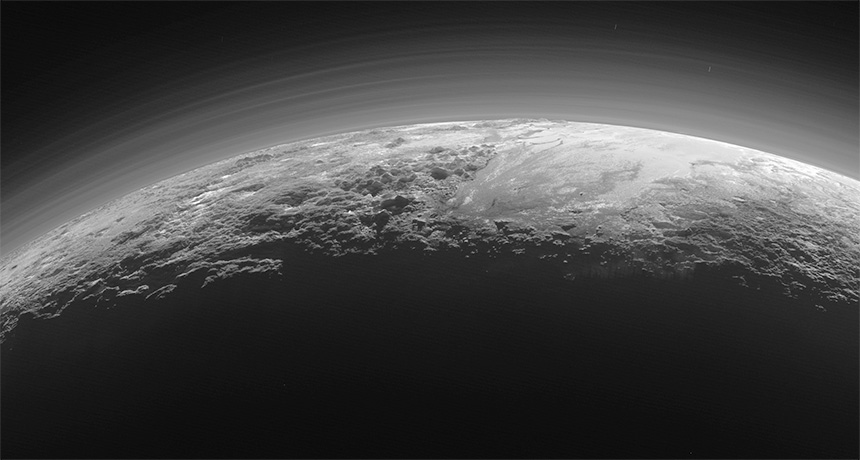How Pluto’s haze could explain its red spots
Collapse of atmosphere may influence blotchy surface colors

LAYERED HAZE Not long after the New Horizons spacecraft buzzed Pluto, it captured an image revealing dozens of layers in Pluto’s atmosphere. That haze affects surface features such as the dwarf planet’s red patches, a new study suggests.
SwRI, JHUAPL, NASA